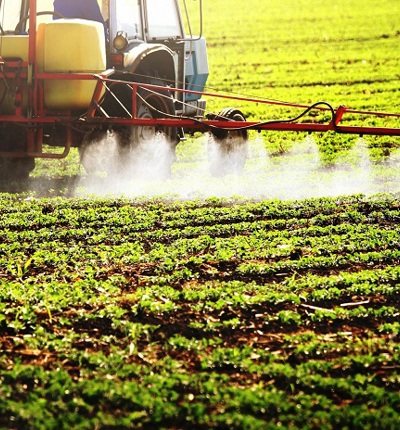
The roundup on toxic pesticides – regulatory divergence, growing litigation
Tom Short and Jonny Buckley examine the recent Monsanto lawsuits and the implications for UK entities.
Posted on 12 September 2019
Monsanto: mounting lawsuits and underhand tactics
In August last year, Monsanto was ordered to pay nearly $290 million compensation to Dewayne Johnson, a 46 year old groundskeeper from California who claimed he had become terminally ill with non-Hodgkin lymphoma cancer as a result of exposure to glyphosate when using the company’s weed killer ‘Roundup’ in his job. A jury ruled that the company was responsible for “negligent failure” and knew or should have known that its product was “dangerous”. In April this year, a US federal jury in California similarly ruled that Monsanto was liable for the non-Hodgkin lymphoma suffered by a man who used Roundup over a thirty year period. These are landmark decisions, and Monsanto – which was acquired by Bayer AG in June 2018 – is now facing over 18,400 similar lawsuits in the US.
These Roundup lawsuits claim that Monsanto knew about the link between glyphosate and cancer as far back as the 1980’s, but engaged in a campaign of misinformation to discredit key scientific studies and mislead consumers, regulators, and farmers about the dangers of using the product, marketing it as “safer than table salt” and “practically non-toxic”.
To date, regulators have expressed conflicting views on the dangers of glyphosate. In 2015, the World Health Organization’s International Agency for Research on Cancer (IARC) classified glyphosate as “probably carcinogenic to humans”. However, in the US, the Environmental Protection Agency (EPA) continues to find that glyphosate is “is not likely to be carcinogenic to humans” and that there are no risks to public health when glyphosate is “used in accordance with its current label”. The IARC says that the EPA’s contrary conclusion can be explained by, among other factors, the EPA’s reliance mostly on registrant-commissioned, unpublished regulatory studies (99% of which were negative) rather than peer-reviewed studies on which the IARC relied (70% of which were positive). Furthermore, the EPA’s focus on typical, general population dietary exposures at legal use levels ignores the typical real-world dietary, occupational, and elevated exposure scenarios that the IARC studied. In the EU, glyphosate is currently approved for use until 2022 and the European Food Safety Authority’s current position is that glyphosate is safe for humans as a pesticide provided maximum residual levels (e.g. in food) are not exceeded, thereby protecting consumers against excessive quantities of glyphosate in their diet.
Monsanto has seemingly exploited this divergence of expert opinion, and appears to have engaged in a concerted campaign to discredit the IARC findings and to stifle criticism and to prevent close scrutiny of the health effects of its own products. Monsanto use of underhand tactics has been revealed in internal Monsanto documents disclosed during the US Roundup litigation, which show that the company operated an “intelligence fusion centre” to monitor critics including journalists and activists, gather information on their activities and strove to discredit them by putting pressure on their editors, paying for search engine results critical of activists and arranging for negative reviews of their work.
Monsanto’s attack line may extend to all countries where it is trying to sell products. In France, Monsanto has, since 2016, kept a list of around 200 journalists and lawmakers critical of the company and its products. It is alleged that Monsanto gathered those names through unlawful means and that Monsanto has actively worked to influence the position on pesticides taken by those named on the list. However, like in the US, the tide may be turning against Monsanto in other countries. For example, in April this year a French court found a causal link between its products and serious harm, ruling that the company was liable for causing a farmer, Paul François, to suffer neurological damage in 2004 after accidentally inhaling fumes from the weed killer Lasso which occurred because the product was inadequately labelled. Lasso contains monochlorobenzene, which was banned in 1992 in Britain and other countries but not banned in France until 2007. Like the Roundup cases in the US, the claimant in the Lasso case in France argued that Monsanto was aware of the dangers of the product long before it was banned from the market. Damages have not yet been assessed, but François is seeking more than 1 million euros.
Home truths: the UK’s fertile ground for dangerous pesticides
Back in the UK, glyphosate is the most widely used herbicide and Roundup is one of the UK’s most popular weed killer brands. To date, there have been no successful lawsuits in the UK relating to allegations of poisoning by glyphosate. Chemicals regulation in the UK currently sits within the EU system, with approvals, restrictions, packing and labelling all falling under EU-wide regulation. The EU’s precautionary approach guides maximum residue levels and leads to careful labelling and safety data sheets with guidance on personal protective equipment and uses. However, while this stringent regulatory oversight undoubtedly helps reduce the chance of harm, the risk of harm is not eliminated. In circumstances where the US courts have found a causal link between the use of Roundup and cancer, the increased use of Roundup in the UK by local authorities is concerning and it must be hoped that all UK entities consider again their use of the pesticide in light of the US lawsuits.
This is all the more pressing given the UK’s likely impending exit from the EU. Whether the same levels of regulatory protection will be maintained in the event of a no-deal Brexit is a political matter. Concerns have been raised that pressure from manufacturers may result in a regulatory regime with lower standards of protection for end users and consumers. Notably, the then-DEFRA minister George Eustice suggested in 2016 ahead of the Referendum vote that the Government might move away from the EU's precautionary principle towards a US-style, risk-based approach, allowing faster, and arguably more lax, authorisation of pesticides, and more recently Lord Gardner of Kimble reiterated the proposal for pesticide approvals to be based on an “assessment of the risks”.
Exporting the problem
DEFRA and the Health and Safety Executive (HSE) already oversee exports to third countries of significant volumes of dangerous chemicals that are manufactured in the UK but banned for use in the EU. This is permitted under the EU’s Prior Informed Consent (PIC) rules with the consent of the importing country, but clearly relies on the importing country to have adequate controls to protect end-users and consumers.
One significant importer of chemicals from the EU, including the UK, is Brazil where the Temer and Bolsonaro governments have, since 2016, approved 1,270 new pesticides. 193 of these contain active ingredients that are banned in the EU, such as Paraquat and Atrazine. Furthermore, a bill is currently being considered in Brazil’s Congress that would lift restrictions on pesticides. Brazil is the already the largest user of pesticides in the world and a removal of restrictions will almost certainly lead to an increase in use. A recent report by Public Eye highlighted many reports of elevated chronic diseases arising from the use of pesticides on Brazilian farms. In addition, the report obtained Brazilian government data showing pesticide residues in 86% of drinking water samples tested. A Human Rights Watch report in 2018 also found that across seven rural sites in Brazil, local communities reported symptoms consistent with acute pesticide poisoning after seeing pesticide spraying nearby, or smelling pesticides recently applied to nearby fields. It is of grave concern that pesticides causing harm abroad may have originated in the UK.
Conclusion
The recent successful lawsuits against Monsanto demonstrate the potential for courts to find a causal link between the use of certain pesticides and alleged harms to health. While there may remain disagreement between experts about safe exposure levels, the US courts have now in effect sided with the IACR and against the EPA in finding that glyphosate is probably carcinogenic to humans. Pesticide manufacturers in the UK, government agencies authorising export, and local authorities using harmful pesticides ought to take note of these suits and take necessary preventative action.



